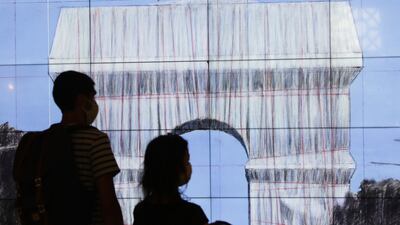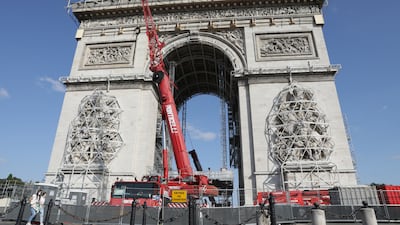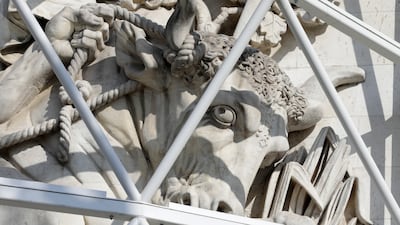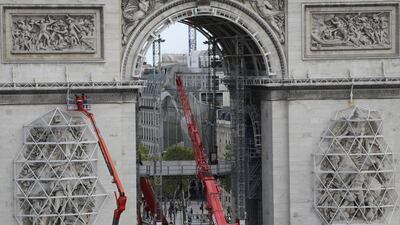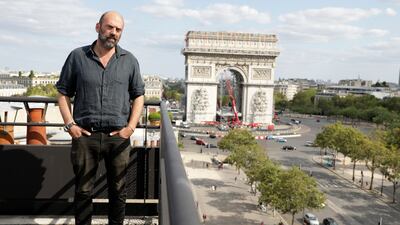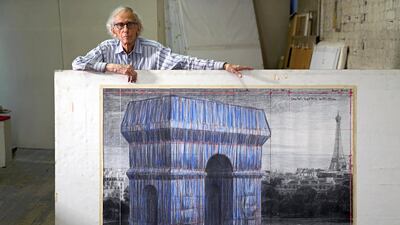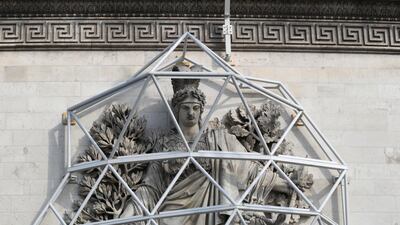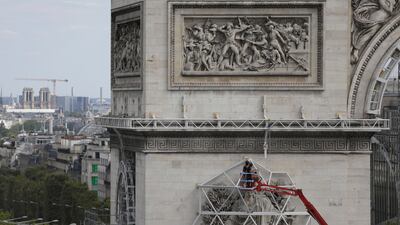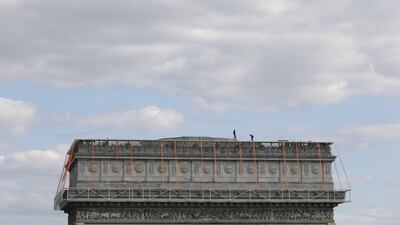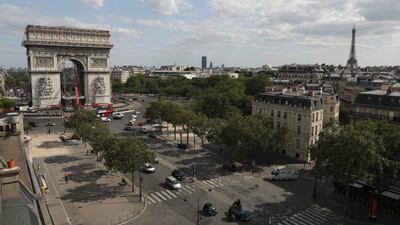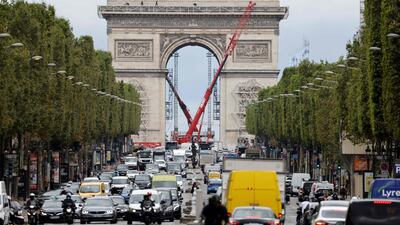A planned wrapping of Paris's historic Arc de Triomphe, part of a posthumous art installation, is set to be completed in September after being delayed by the coronavirus pandemic.
Initially scheduled to take place last autumn, L’Arc de Triomphe, Wrapped will cover the war monument in silver and blue recyclable polypropylene fabric from September 18 to October 3. Visitors at the foot of the Arc de Triomphe will be able to touch the fabric, and those climbing to the top will step on it when they reach the roof terrace, as intended by the artists.
Designed by artist couple Christo and Jeanne-Claude who first came up with the idea in 1961 when they lived in Paris, the $16.4 million project was delayed by the Covid-19 pandemic.
Jeanne-Claude died in 2009, and in spite of Christo’s death in May 2020, the project carried on.
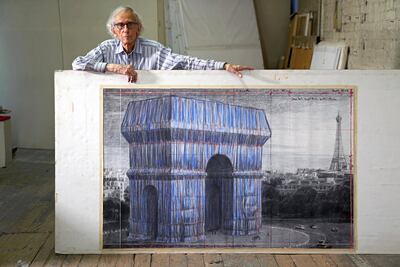
“Christo has wrapped museums, parliaments as in Germany, but a monument like this? Not really. This is the first time. This is the first monument of this importance and scale that he has done,” Vladimir Yavachev, the artist's nephew, told The Associated Press.
“He wanted to complete this project. He made us promise him that we will do it."
The project is being self-financed through the sale of Christo’s preparatory studies, drawings, scale models and other pieces of work. More than 25,000 square metres of fabric and 3,000 metres of red rope, all recyclable, will be used. Preparations have already started on the Napoleon-era arch, where workers are covering statues to protect them from the wrapping.
Born in Bulgaria in 1935, Christo Vladimirov Javacheff met Jeanne-Claude Denat de Guillebon, born in Morocco on the exact same day as him, in Paris in 1958.
The artists were known for elaborate, temporary creations that involved blanketing familiar public places with fabric, such as Berlin’s Reichstag and Paris’s Pont Neuf bridge, and creating giant site-specific installations, such as a series of 7,503 gates in New York City’s Central Park and the 40-kilometre “Running Fence” in California.
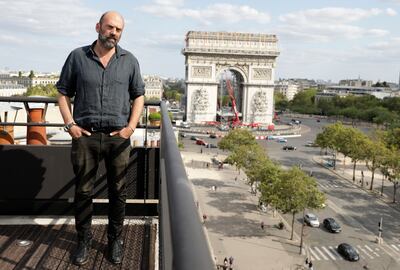
Yavachev plans on completing another one of his uncle and aunt’s unfinished projects: a 150-metre-tall pyramid-like mastaba in Abu Dhabi.
“We have the blueprints, we just have to do it,” he said.
As long ago as 1977, Christo, a regular visitor to Abu Dhabi, envisaged a sculpture 150 metres high and 300 metres long using 410,000 multicoloured oil barrels.
“My uncle used to talk about the software and hardware stages of a project,” Yavachev told The National in July. “Software was when it was in the hearts and minds of the team, hardware was as we moved on and started physically building.
“So The Mastaba is still at the software point. But we have done all the engineering, we have the location and we are ready to go.”
Christo and Jeanne-Claude first visited the UAE in 1979 – two years after the artist came up with the idea of The Mastaba – and their introduction to the country was followed by many more trips.
They identified a site in Gharbia, near the oasis of Liwa and about 160km south of Abu Dhabi city.
“Christo was a very visual artist,” his nephew said. “He found a very strong connection with the quite incredible, stunning beauty and light changes of the desert, but he also had a great relationship with the people he met in Abu Dhabi.”
Speaking to The National in 2018, Christo said the mastaba project would cost around $350 million.
“It is almost like to build a new Eiffel Tower, and if it happens, it will be a landmark for the 21st century," he said.
